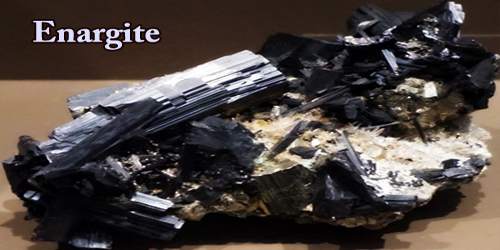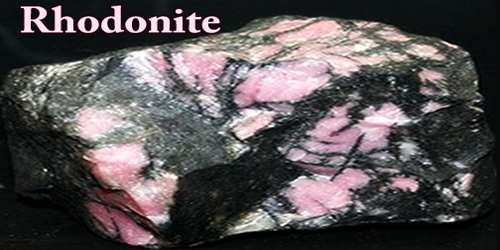Definition –
Hornblende is a complex inosilicate series of minerals (ferrohornblende -magnesiohornblende), which is found in many types of igneous and metamorphic rocks. The word ‘Hornblende’ is derived from the German horn and blenden, to ‘deceive’ in allusion to its similarity in appearance to metal-bearing ore minerals. Hornblende’s generalized chemical formula is (Ca,Na)2-3(Mg,Fe,Al)5(Si,Al)8O22(OH,F)2. The four end-members and the cation content of their respective compositions are as follows: hornblende, Ca2(Mg4Al) (Si7Al); tschermakite, Ca2(Mg3Al2)(Si6Al2); edenite, NaCa2(Mg)5(Si7Al); pargasite, NaCa2 (Mg4Al)(Si6Al2).
Hornblende is not a recognized mineral in its own right, but the name is used as a general or field term, to refer to a dark amphibole. It is an isomorphous mixture of three molecules; a calcium-iron-magnesium silicate, an aluminum-iron-magnesium silicate, and an iron-magnesium silicate.

Hornblende Minerals – Hornblende is a name used for a number of dark-colored amphibole minerals that are compositional variants with similar physical properties. These minerals cannot be distinguished from one another without laboratory analysis.
Physical Properties of Hornblende – Hornblende has a hardness of 5-6, a specific gravity of 2.9-3.4 and is typically an opaque green, greenish-brown, brown or black color. Its cleavage angles are at 56 and 124 degrees. It is most often confused with various pyroxene minerals and biotite mica, which are black and can be found in granite and in charnockite.
The angle between the cleavage planes and hornblende’s elongate habit can be used to distinguish it from augite and other pyroxene minerals that have a short blocky habit and cleavage angles intersecting at about 90 degrees. The presence of cleavage can be used to distinguish it from black tourmaline that often occurs in the same rocks.
Occurrences of Hornblende – Hornblende occurs widely in metamorphic and igneous rocks. Pargasite occurs in high-grade metamorphic rocks that tend to have more aluminum. Metamorphic rocks with abundant hornblende are called amphibolites.
Hornblende is a rock-forming mineral that is an important constituent in acidic and intermediate igneous rocks such as granite, diorite, syenite, andesite, and rhyolite. It is also found in metamorphic rocks such as gneiss and schist.
It is the principal mineral of amphibolites. Very dark brown to black hornblendes that contain titanium are ordinarily called basaltic hornblende, from the fact that they are usually a constituent of basalt and related rocks. Hornblende alters easily to chlorite and epidote.
A rare variety of hornblende contains less than 5% of iron oxide, is gray to white in color, and named edenite, from its locality in Edenville, Orange County, New York.
Other minerals in the hornblende series include: pargasite, hastingsite, tschermakite, edenite
Uses of Hornblende – Hornblende is the most abundant mineral in a rock known as amphibolite which has a large number of uses. It is crushed and used for highway construction and as railroad ballast. It is cut for use as dimension stone. The highest quality pieces are cut, polished, and sold under the name “black granite” for use as building facing, floor tiles, countertops, and other architectural uses.
However, mineral hornblende has very few uses. Its primary use might be as a mineral specimen. Hornblende has been used to estimate the depth of crystallization of plutonic rocks. Those with low aluminum content are associated with shallow depths of crystallization, while those with higher aluminum content are associated with greater depths of crystallization.
Information Sources:
















